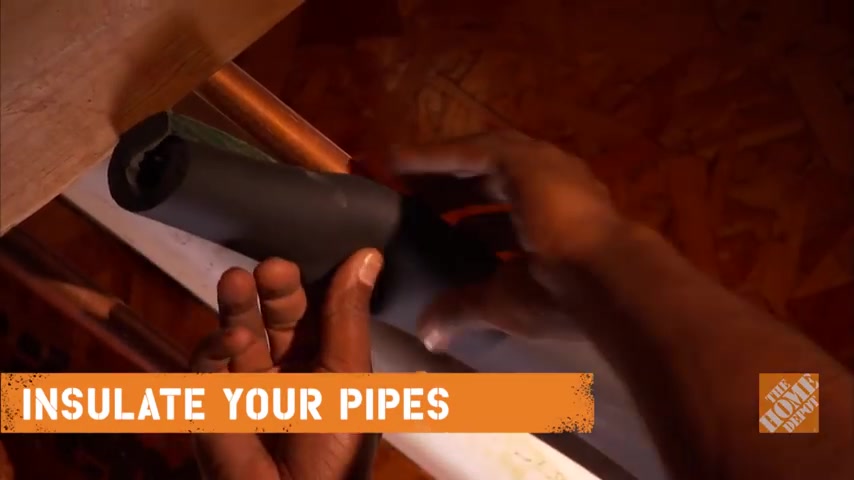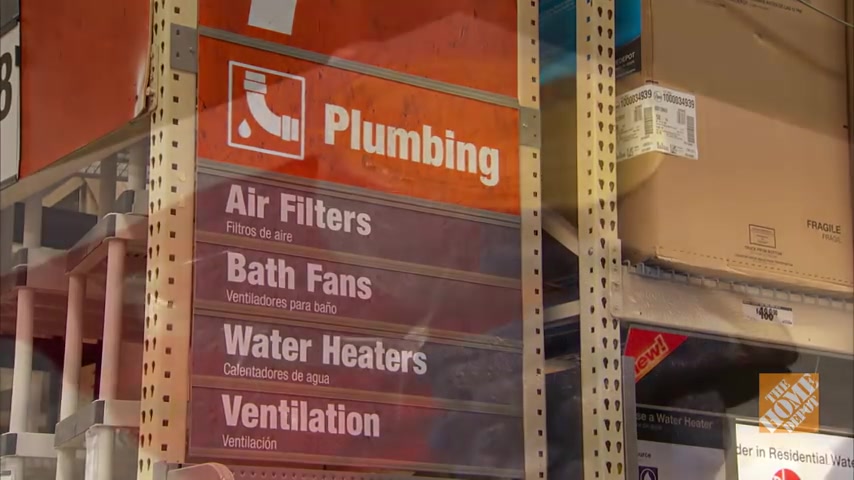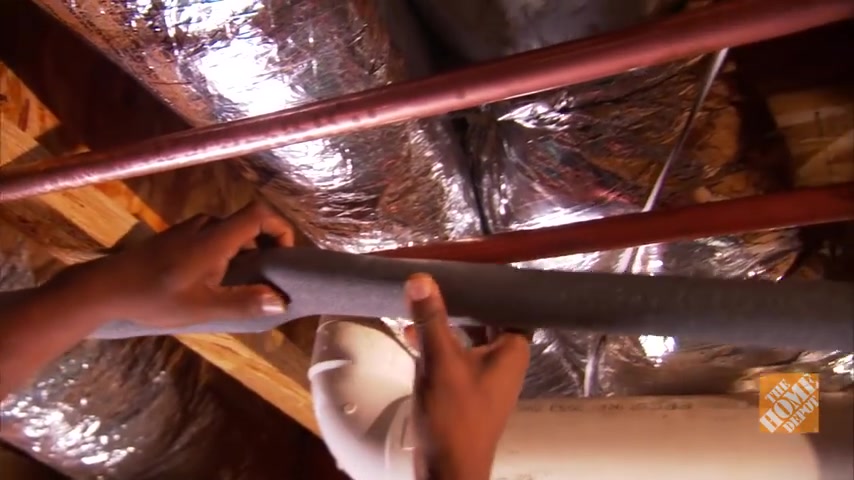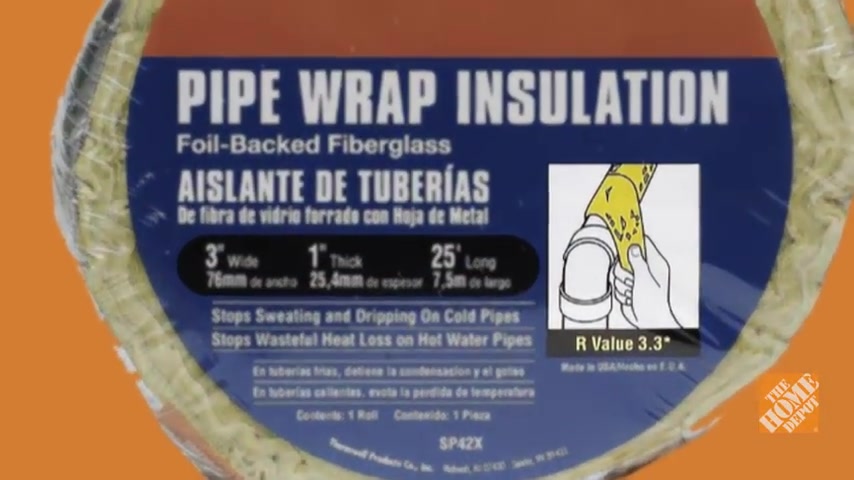https://www.youtube.com/watch?v=XxbtlKW2-wU
How to Insulate Pipes - Weatherization Tips _ The Home Depot

One of the best ways to protect the plumbing system of your home is to insulate your pipes .
It helps keep your hot water pipes warm and prevents water from freezing in cold temperatures .
Cold air could cause the water flowing through your pipes to freeze and expand this can fracture and burst your pipes leading to structural damages .
And a hefty repair bill pipes that are exposed in unheated areas such as basements and exterior walls are particularly vulnerable .
Pipe insulation , not only helps protect you against a catastrophe , but it also reduces plumbing noise , mold growth and heat loss and it allows you to save energy year round .
Always wear safety glasses when working with pipe insulation and follow the guidelines of your manufacturer .
You may need a ladder to reach the pipes particularly in basements with high ceilings .
Like the one shown in this video before you begin the insulation , remove any dirt or grease from the pipes with a rag and mild cleanser and allow the pipes to completely dry .

A couple of the most popular pipe installations are fiberglass pipe wrap and tubular pipe sticks both available in the plumbing aisle of your local home .
Depot store or at home depot dot com .
Fiberglass pipe wrap can be used in high heat areas where tubular installations shouldn't be used near furnaces and water heaters .
It's also suitable for pipes with many bends and turns .
Fiberglass has small glass particles that could break off .
In addition to safety glasses and work gloves , wear a dust mask and a long sleeve shirt for added protection when working with fiberglass to apply the fiberglass pipe wrap , unroll it with the foil side facing upwards , slightly overlap the wrap as you go to ensure the pipe is fully covered .

Even around corners and complex angles don't wrap it too tightly secure the ends of your wrap with acrylic tape or duct tape , tubular pipe insulation or pipe sticks come in a variety of sizes and are useful for copper and iron pipes with long straight runs , measure your pipes to determine the appropriate size pipe sticks to use for them .
Some pipe sticks come pre slit with an adhesive so you can conveniently slip it around pipes and seal the opening pipe sticks made of polyethylene foam are firm .
Whereas rubber foam pipe sticks are flexible .
Rubber foam sticks are more durable and useful for lines connecting to refrigerators and air conditioners to apply pipe sticks , dry fit and cut them to the length of your pipes .
Carve out spaces for valves and T joints .
If you're installing polyethylene foam pipe sticks , use T foam connectors and elbow foam connectors to insulate corners and complex angles , secure the pipe sticks with acrylic tape or duct tape .
When measuring the pipe sticks look for the R value on the package .

The R value is the measure of thermal resistance or the ability of insulation to resist air from passing through it .
The higher the R value , the more effective the insulation is in keeping hot water pipes warm and cold water pipes cool to help maintain your pipe insulation , disconnect your garden hoses .
Use cocking to seal any cracks and holes in outside walls and foundations near water pipes allow a slow trickle of water to flow through faucets connected to pipes in unheated areas .
If you plan to be away from your home during the cold season , consider draining your water system .
Lastly , check on your pipe insulation regularly to make sure it's in good condition and that it fully covers your pipes .
Are you looking for a way to reach a wider audience and get more views on your videos?
Our innovative video to text transcribing service can help you do just that.
We provide accurate transcriptions of your videos along with visual content that will help you attract new viewers and keep them engaged. Plus, our data analytics and ad campaign tools can help you monetize your content and maximize your revenue.
Let's partner up and take your video content to the next level!
Contact us today to learn more.